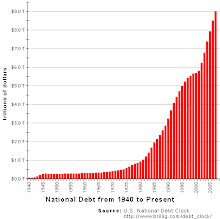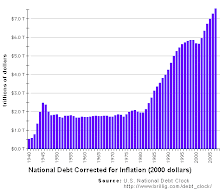WASHINGTON – At long last, the worst recession since World War II appears on the verge of ending.
The economy dipped only slightly in the second quarter of this year — falling at a 1 percent annual pace, better than expected. And many analysts think the economy is starting to grow again in the current quarter, setting up a long-awaited recovery.
Still, any rebound is likely to be restrained by consumers' reluctance to spend. Stressed by rising unemployment, smaller paychecks and shrunken nest eggs, Americans spent less in the second quarter. Without the full strength of consumer spending, which supplies more than two-thirds of U.S. economic activity, businesses would need to deliver more of the firepower for sustained growth.
Economists say they are hopeful that consumers, aided by the "cash for clunkers" program to boost car sales, eventually will nudge up spending. Over time, that would help stem a still-heavy wave of job losses and stimulate hiring.
"We won't have a recovery as long as we keep losing jobs," President Barack Obama acknowledged Friday.
He added: "Eventually, businesses will start growing again and will start hiring again, and that's when it will truly feel like a recovery to the American people."
The small drop in gross domestic product for the April-to-June period, reported Friday by the Commerce Department, followed a dizzying free fall in the first three months of this year. The economy plunged at an annual rate of 6.4 percent in the first quarter, the worst in nearly three decades.
Including the April-to-June period, the economy has now contracted for a record four straight quarters, for the first time on record dating to 1947. Over that period, companies and ordinary Americans have suffered a painful toll, with job losses still exceeding a net total of 400,000 each month.
Many economists had predicted a slightly worse 1.5 percent annualized contraction in second-quarter GDP, which is considered the best gauge of U.S. economic health. GDP measures the value of all goods and services — everything from cars, clothes and computers to makeup, manicures and machinery — produced in the United States.
"The recession seems to be largely over with at this point," said economist Joel Naroff, president of Naroff Economic Advisors. "We still have a long way to go to get back to full health."
Behind the better second-quarter performance were other signs of a fading recession: less drastic spending cuts by businesses, a resumption of federal and local government spending and an improved trade picture.
Businesses did end up cutting their stockpiles of goods at a record pace in the second quarter, but that carries a silver lining. With their inventories at rock-bottom, businesses will likely need to ramp up production to meet customer demand. That would stimulate the economy starting in the current quarter.
Some economists think growth in the July-to-September quarter could be more vigorous than previously forecast — possibly 3 percent annual growth or higher.
Obama's stimulus package of tax cuts and increased government spending provided some support to the economy in the second quarter. But it will have more impact in the second half of this year as it extends its reach, economists said.
In the meantime, the damage caused by this recession runs deep.
The figures released Friday provide the most compelling evidence to date that the current recession has been the worst since the Great Depression. It has taken a 3.9 percent bite out of economic activity so far, said Mark Zandi, chief economist at Moody's Economy.com. Before this downturn, the most painful hit came in the 1957-58 recession, when GDP fell 3.8 percent, he said.
And in revisions to GDP figures that stretch back to the Great Depression, the Commerce Department now estimates the economy grew just 0.4 percent in 2008. That's much weaker than the 1.1 percent growth the government had earlier estimated.
Even if the recession ends later this year, the job market will remain weak. Companies are expected to keep cutting payroll through the rest of this year.
The Fed says unemployment — now at a 26-year high of 9.5 percent — will top 10 percent at the end of this year. Businesses won't likely boost hiring until they're certain the recovery has staying power.
In the second quarter, businesses — including home builders — continued to cut spending, though not nearly as much as they had earlier. That's one reason the economy didn't contract as much as feared.
Consumers retreated en masse. They sliced spending at a rate of 1.2 percent in the second quarter, after having nudged up purchases at a 0.6 percent pace in the first quarter. In large part, that's because wages and salaries have fallen for the past three quarters.
With people spending less, Americans' savings rate rose sharply — to 5.2 percent in the second quarter, the highest since 1998.
As important as savings is, many economists wish that consumers would save less and spend more right now to help propel the recovery.
"I'm praying, 'God, please don't encourage American households to save a lot more just yet,'" said Nariman Behravesh, chief economist at IHS Global Insight.
Friday, July 31, 2009
US economy appears poised to start growing again
In US economy appears poised to start growing again, Associated Press economics writer Jeannine Aversa reports:
Subscribe to:
Post Comments (Atom)






The economy is weak.
ReplyDelete